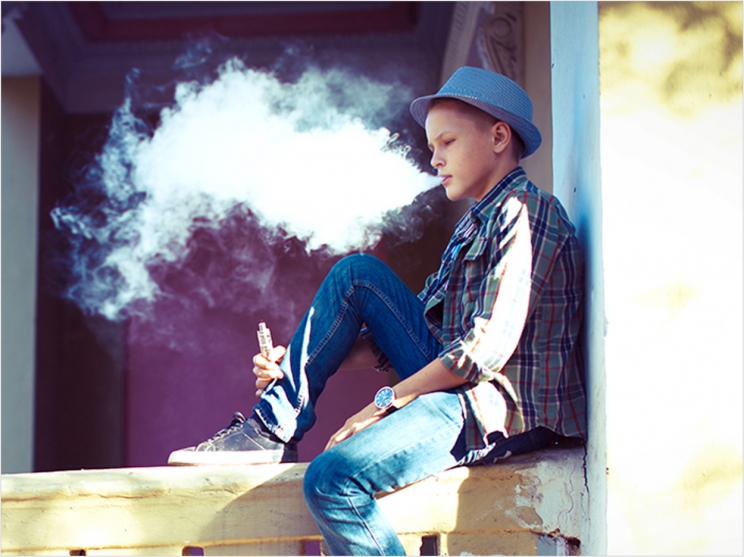
Most parents know or suspect when their child smokes, but they are much more likely to be in the dark if the child vapes or uses other tobacco products, according to researchers at the University of California San Francisco (UCSF) School of Dentistry.
The nationwide study tracked more than 23,000 participants between the ages of 12 and 17. It found that parents or guardians were substantially less likely to report knowing or suspecting that their child had used tobacco if the child only used e-cigarettes, non-cigarette combustible products, or smokeless tobacco, compared to cigarettes or multiple tobacco products.
Also, when parents set strong household rules about not using tobacco and applied them to all residents of the home, children were less likely to start tobacco use. Just talking to children about not smoking was far less effective, the researchers said.
“We know that tobacco-free homes are a key tool to help prevent smoking by kids,” said corresponding and senior author Benjamin Chaffee, DDS, MPH, PhD, associate professor at the UCSF School of Dentistry.
“What studies haven’t examined is how tobacco-free homes stack up against other approaches and how much tobacco-free home rules might help with other tobacco products beyond smoking,” Chaffee said.
“Tobacco use by children in troubling, and dentists, like all healthcare providers, should be concerned about preventing youth tobacco use,” Chaffee said.
The smoking landscape has dramatically changed over the last decade, the researchers said. Among youth, they said, cigarette smoking has declined while e-cigarette use has soared. Last year, the Centers for Disease Control and Prevention reported that more than one in four high school students were vaping.
The researchers used data from the Population Assessment of Tobacco and Health Study to investigate parental awareness of youth tobacco use and the role of household tobacco rules in preventing smoking.
In addition to cigarettes and e-cigarettes, the study looked at non-cigarette combustible products including cigars, pipes, hookahs, and bidis and smokeless tobacco including snuff, chewing tobacco, snus, and dissolvable tobacco.
Parents were more likely to know or suspect that their child was using a tobacco or nicotine product if the child was older, male, identified as white, and lived with a tobacco user, as well as if the parents were less educated, the researchers said. Mothers were singled out as more aware than fathers.
Also, teens and tweens living in homes with the strictest rules prohibiting tobacco use were 20% to 26% less likely to start using tobacco compared to youth living in the most permissive homes.
The researchers suggest that parents:
- Don’t smoke
- Create tobacco-free home environments including all parts of the home
- Establish strict rules against all tobacco use that apply to all members of the household
- Have high-quality, clear communication with youth about not using tobacco
“Low parental awareness of e-cigarette use belies rising public attention to youth vaping. Youth tobacco use is a considerable public health concern, regardless of the tobacco product used, and parents play a very important role in tobacco prevention,” said coauthor Tsu-Shuan Wu, a student at the UCSF School of Dentistry.
“Creating tobacco-free home environments is one approach parents can use to set norms and expectations about tobacco use,” Wu said. “And for healthcare providers, raising parental awareness should be part of overall guidance and tobacco-prevention support.”
The study, “Parental Awareness of Youth Tobacco Use and the Role of Household Tobacco Rules in Use Prevention,” was published by Pediatrics.
Related Articles
Vaping: What Every Teenager Should Know
A Few Months of Vaping Puts Healthy People on the Brink of Oral Disease
Vaping Alters the Oral Microbiome, Increasing Infection Risks











